Since the animals at your Akron Zoo come to us from all around the world, some of our residents (like many Ohioans) choose to spend the winter indoors where it is warm. Some species, however, are perfectly suited for the snow and they love to spend this season outside! We wanted to take this opportunity to spotlight our animal residents who like it cold!
Grizzly Bears

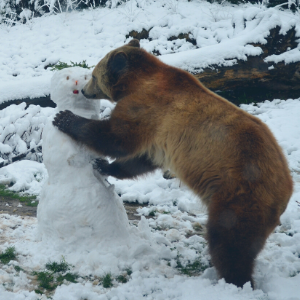
Many guests expect our grizzly bears to sleep through the winter, but Jackson and Cheyenne are not true hibernators. In fact, many species of bears spend the winter in a state of torpor instead of hibernation. In this state, bears do decrease the amount they are eating and increase their sleep, but there are also periods of time when they are awake and active.
Jackson and Cheyenne spend more of their time resting in the winter, but they can also be seen rolling through snow banks, wrestling, and enjoying the enrichment their keepers provide for them!
Eagles

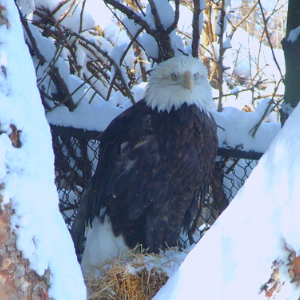
Eagles in their natural habitat generally migrate south or east during the winter months, but only as far as necessary to find an ice-free water source. They roost in deciduous and coniferous trees with large, protective canopies and hunt within an eight mile radius.
Since our eagles do not migrate, we make sure we provide them with a protective and warm roosting space. They spend winters hopping through the snow and roosting, and Petry still happily greets guests at the window when they come to visit!
North American River Otter
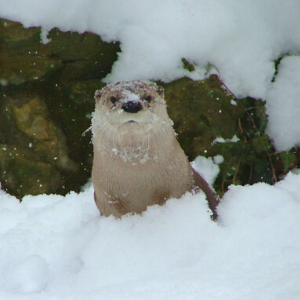
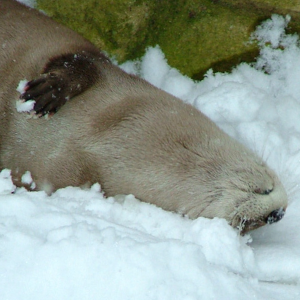
North American river otters are an inherently playful species, especially when in human care. In the winter, our otter enjoys swimming, running around her habitat, sliding through the snow and taking regular dips in the pool! Since she is native to Ohio, she is accustomed to this weather, and it will certainly not interrupt her play time!
Snowy Owl
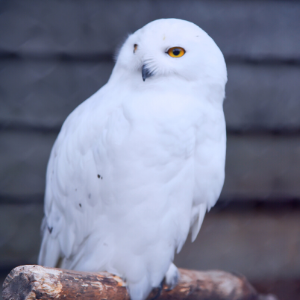
Many of us know snow owls enjoy the winter, especially after many iconic scenes of Hedwig in Harry Potter. Their thick feathers keep them warm, even in Arctic temperatures. Because of these feathers, snowy owls can weigh as much as four pounds, making them the heaviest owl species in North America!
Though one of our snowy owls is named Hedwig, they do not spend the winter starring in movies. Instead, they relax in the feathered comfort of their wings!
Coyotes
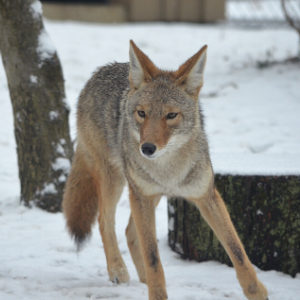
Our coyotes’ bushy tails and thick fur helps them to be perfectly equipped for winter weather. As native residents of Ohio, coyotes are well adapted to spending time in the cold, and these nocturnal predators are just as active in the winter as they are in the summer. Shilah and Kaliska can often be seen chasing each other and exploring their habitat in the snow.
Himalayan Tahr
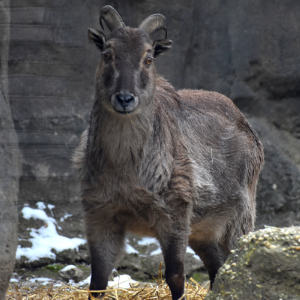
Himalayan tahr are native to the higher elevations of the Himalayan mountains, so their species is well-equipped to handle the cold. Tahrs’ hooves have a soft inner core with a sharp outer rim, allowing them to grip to slick rocks and ice, or shove their hoves into small openings in the rock. In this way, they are able to climb up and down their rocky habitat, even in thick snow! Their fur also keeps their bodies warm in lower temperatures.
Snow Leopards
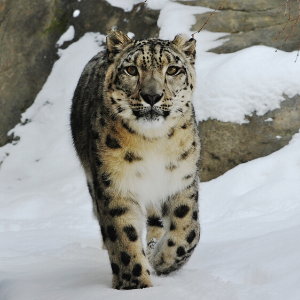
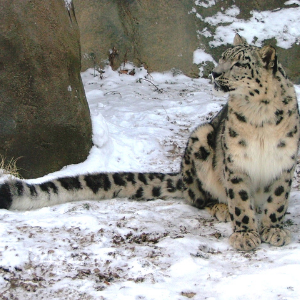
Like the tahr, snow leopards are also native to the mountains and are therefore accustomed to (you guessed it) snow! Their thick coats keep their core temperatures up, while their coloring allows them to blend in among the snow and rocks.
Our snow leopards enjoy pouncing in the snow and laying in cold spots. Since this is Baya’s first winter, she is still new to snow and, though she enjoys the weather fine, her mom is still her favorite thing to play with.
Musk Deer


Our musk deer, who are native to the mountains of Siberia, have thick coats that keep them warm. They are crepuscular, meaning they are most active early in the morning and later in the evening. During these times they can be spotted roaming around their habitat. During midday, they can be seen taking cozy naps in the snow, protected by their fluffy coats.
Red Wolves
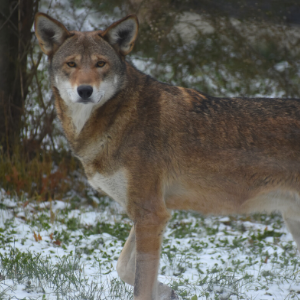
Red wolves are usually nocturnal, though the species tends to be more active during the day in winter months. These canines have thick, warm fur coats that protects them from the cold. In the winter, Waya can be seen walking the perimeter of his territory, saying hello to guests at his window and checking out his neighbors, our coyotes!
Be sure to visit all of our cold weather friends at your Akron Zoo! Your support helps us to provide quality care for our animals, whether they like it hot or cold!

